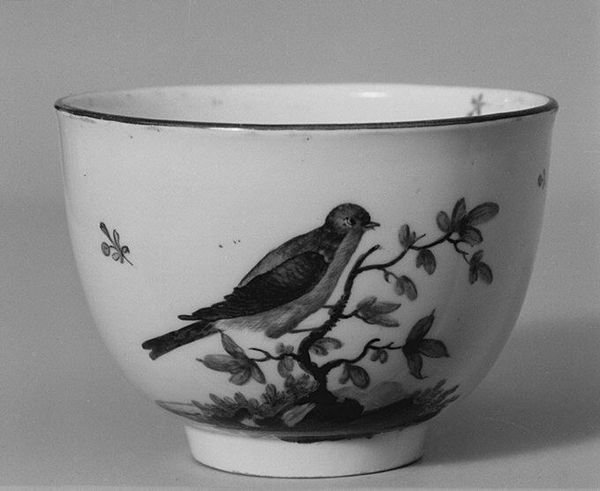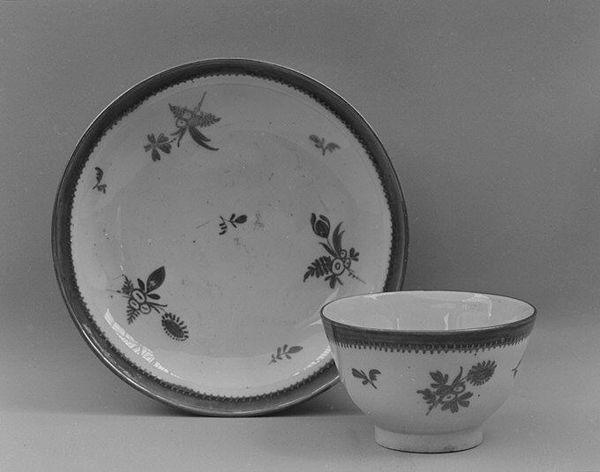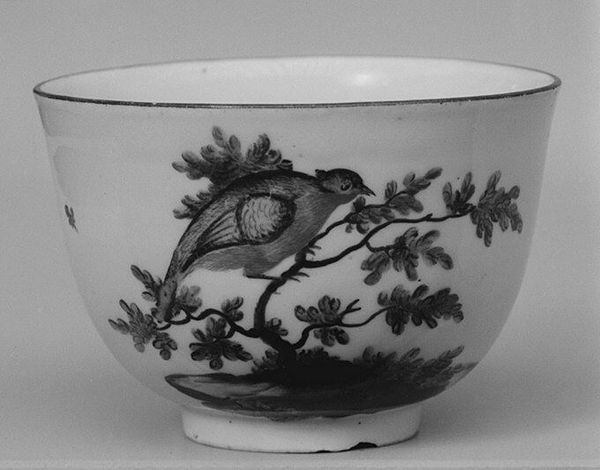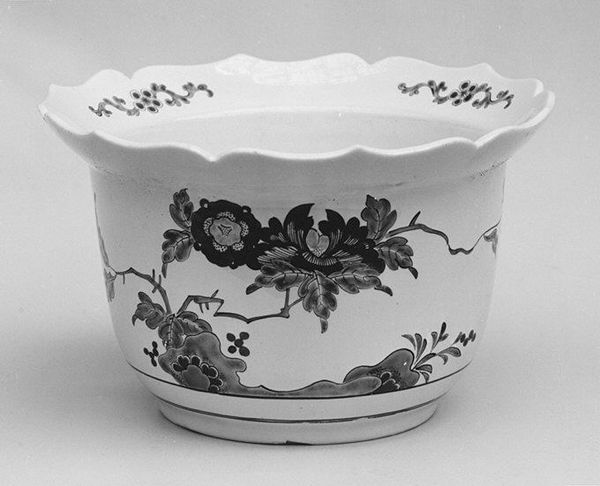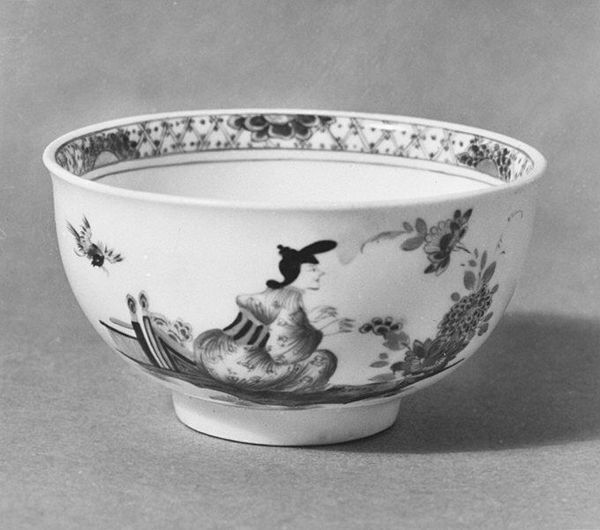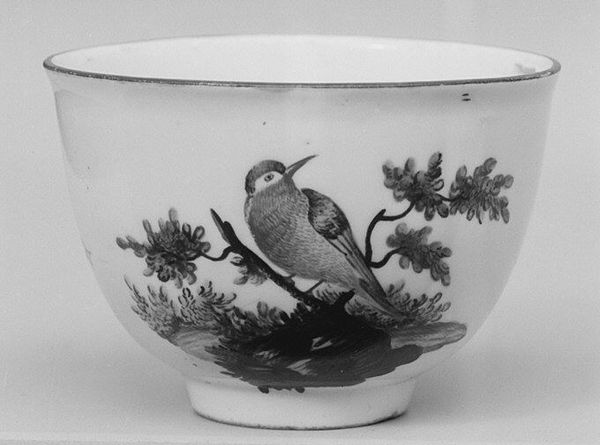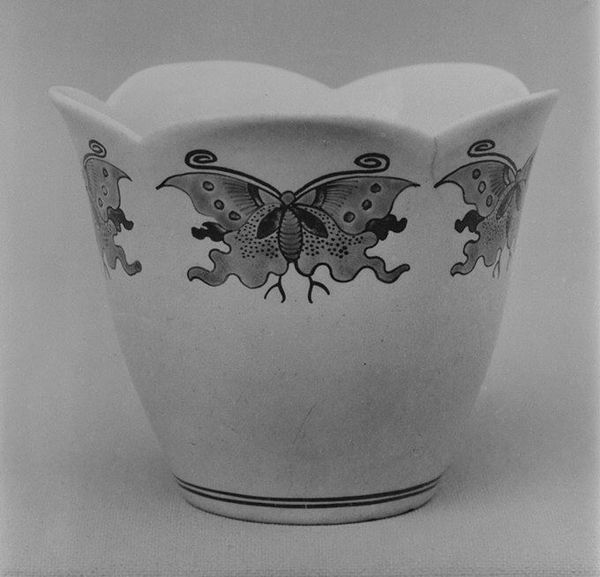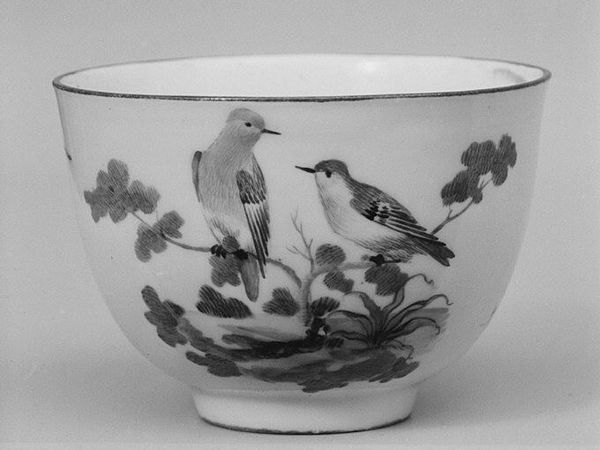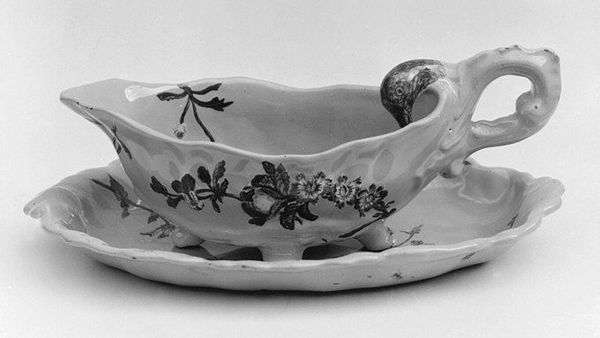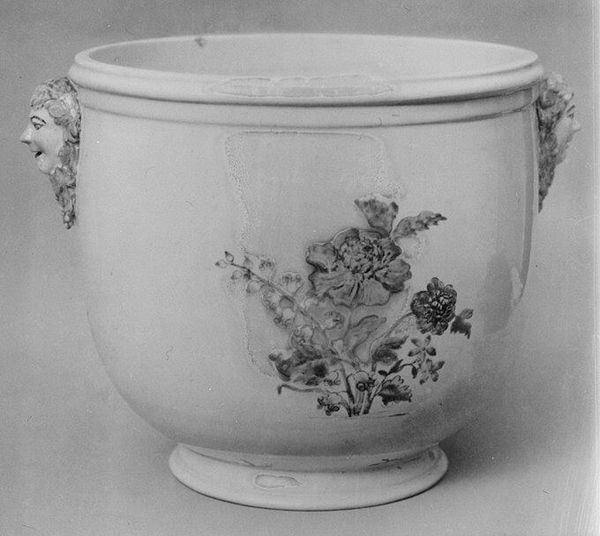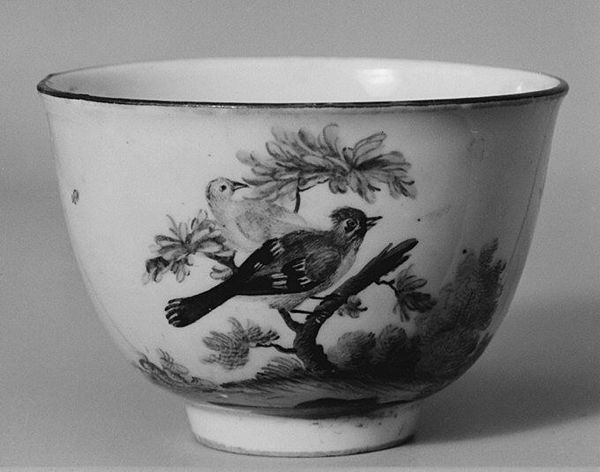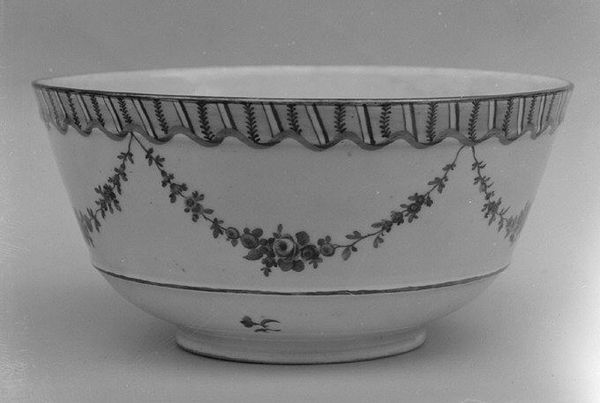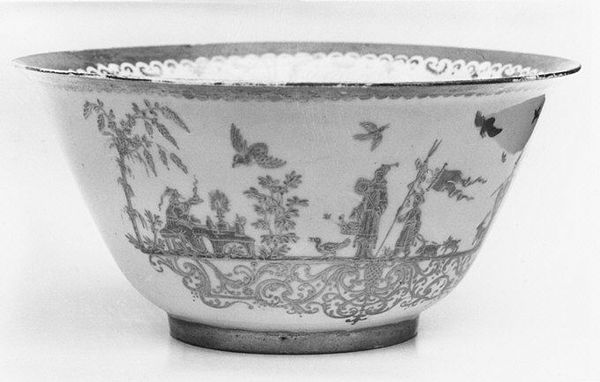
ceramic, porcelain, sculpture
#
baroque
#
ceramic
#
bird
#
flower
#
porcelain
#
sculpture
#
decorative-art
Dimensions: Cup (.97): 2 15/16 × 3 7/8 in. (7.5 × 9.8 cm); Saucer (.98): 1 1/2 × 5 3/4 in. (3.8 × 14.6 cm)
Copyright: Public Domain
Editor: This porcelain cup and saucer was crafted around 1735-1745 by the Meissen Manufactory. I am drawn to the delicate rendering of the flowers and what seems to be a bird motif; they create a sense of lightness. How do you interpret the symbols employed here? Curator: Indeed, porcelain itself, particularly in this era, carried immense symbolic weight, representing status, refinement, and global trade. Notice how the painter uses asymmetry. This was intentional, aligning with the prevailing Baroque aesthetic. It mirrors life's unpredictability, rejecting rigid formalism. Editor: I see. And what about the specific flora and fauna chosen for the decoration? Curator: Flowers, universally, signify beauty and transience. But their specific meanings evolve across cultures. For example, the type of flower might indicate fleeting moments. And the birds often carry religious or mythological significance, messengers or symbols of the soul's journey. In this context, they act as visual metaphors enriching the drinking experience. What feelings do these symbols evoke in you? Editor: They speak of a celebration of the everyday, imbuing ordinary acts with symbolic resonance. But is there a message of elitism since this type of ware could only be enjoyed by those with money? Curator: A valid question. The imagery promotes not just material value but the elevated taste associated with the cultivated consumer. Editor: I now look at this porcelain from a more holistic vantage, which is incredible. Curator: Agreed, symbolism provides us with a unique insight into how material culture, in any period, transmits cultural values.
Comments
No comments
Be the first to comment and join the conversation on the ultimate creative platform.
